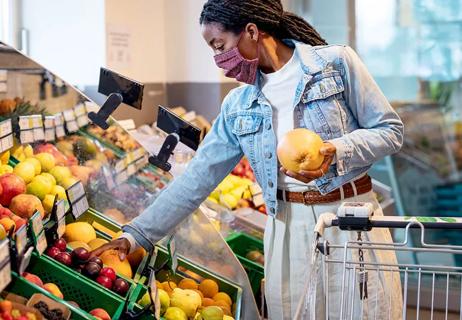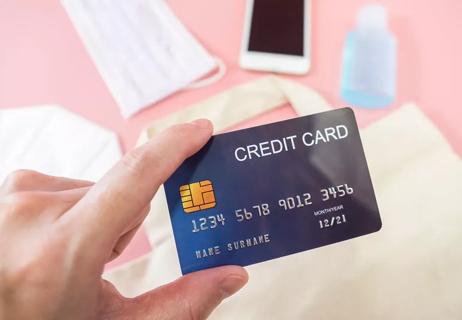Whole-grain options low in sugar and sodium form the foundation of a good-for-you breakfast

Cereal is a quick, easy and delicious breakfast option. It can be healthy, too — if you’re filling your cereal bowl from the right box.
Advertisement
Cleveland Clinic is a non-profit academic medical center. Advertising on our site helps support our mission. We do not endorse non-Cleveland Clinic products or services. Policy
Many of the eye-catching boxes in the cereal aisle are more sugar bombs than balanced breakfasts, says registered dietitian Beth Czerwony, RD. (Spoiler alert: Funny-shaped marshmallows DO NOT offer much nutritional value.)
So, how can you choose a breakfast cereal worthy of spooning for the most important meal of the day? Czerwony has a few suggestions.
All the information you need to separate the healthy cereal options from those that are sweet treats in disguise is readily available. All it takes is some nutrition label reading while you’re shopping.
“Want to know what cereal is healthy?” asks Czerwony. “The answer is on the side of the box.”
Here’s what you want to find:
Whole grains supply a healthy foundation for cereals. It doesn’t matter whether it’s whole wheat, whole-grain flour, whole-grain oats or whole-grain brown rice either.
“When it comes to nutritional value, whole grains provide quite a payoff,” says Czerwony.
Compared to white flour and other refined grains, whole grains are higher in fiber, protein and nutrients, like iron, magnesium, selenium and B vitamins. The reason? Those processed grains lose much of their nutritional value during the milling process.
A diet rich in whole grains also can lower your risk of heart disease and help prevent diabetes. (Talk about getting a lot done at breakfast!)
Advertisement
Another bonus of whole grain? Fiber, which is fabulous for digestion and your gut health
“Fiber slows down digestion so that sugars from what you ate trickle into your bloodstream,” explains Czerwony. “You don’t have those highs and lows, which keeps your body in better balance.”
Fiber helps you stay full, too — which means a hearty bowl of fiber-rich cereal for breakfast can help hold you over until lunch and keep your stomach from rumbling during a mid-morning meeting.
Pro tip: Aim for at least 3 grams of fiber per serving with cereal.
Protein can also help you feel full. While sweet cereals may have only 1 or 2 grams of protein, healthier options can have closer to 10 grams. (Oatmeal can run even higher in the protein count, too, if you count it as a cereal.)
Let’s start with this basic fact: Most Americans eat way more than the recommended daily limit on sugar. (In case you’re wondering, the general rule of thumb for daily sugar intake is no more than 36 grams for men and 25 grams for women).
To start your day on the right foot, look for lower-sugar cereals with less than 9 grams of sugar per serving. “Keep it in the single digits,” recommends Czerwony.
Another good guideline: Don’t pick cereals with sugar listed in the top five ingredients. And beware of “sugar imposters” such as glucose, maltodextrin, high fructose corn syrup and evaporated cane juice.
Salt in cereal? You bet — and sweeter cereals are more likely to have elevated sodium levels. “Sweet and salt go together,” says Czerwony. “Manufacturers will add that sodium in to make something sweet taste even sweeter.”
Look to choose a cereal with less than 140 milligrams of sodium per serving. Aim for an even lower number if you have high blood pressure (hypertension) or kidney issues.
Cereal can be pretty sneaky. Healthy-sounding options like granola, for instance, can pack a surprising amount of fat, sugar and unwanted carbohydrates into those crunchy breakfast nuggets.
“A cereal may contain whole grains and be high in fiber and still not be the best choice depending on what else is tossed in there,” cautions Czerwony. “It’s easy to make something unhealthy.”
That means it’s up to you to be savvy when looking at the nutrition label and ingredients list. (Want to learn more about reading a nutrition label? Then check out these tips from a registered dietitian.)
Your best bet for cereals is to keep your selection plain. “That’s code for skipping flavored and frosted varieties,” says Czerwony.
So, you’re going to make a healthy choice and select a basic cereal without magical marshmallows or miniature cookies. The good news? It’s pretty easy to add some excitement to that plain bowl.
Advertisement
“A lot of cereals are a neutral when it comes to taste,” notes Czerwony. “That gives you a lot of room to drop in some healthy flavor.”
She suggests adding:
To hear more from Czerwony on this topic, listen to the Health Essentials Podcast episode, “Setting the Table for a Healthy Breakfast.” New episodes of the Health Essentials Podcast are available every Wednesday.
Advertisement
Learn more about our editorial process.
Advertisement

An occasional shopping spree can boost your mood by distracting you from stressors and pumping your brain full of ‘happy hormones’

Signs you’re a compulsive spender include lying about purchases, buying things you don’t use and treating shopping like a hobby

Information on serving size, calories and nutrients can help you make healthy choices

From planning ahead to resisting bargains, these tips could also save you money

All it takes is a little planning

Avoid bringing bacteria home

4 ways to identify foods that are (actually) good for you

Edamame, lentils and chicken breast are good sources of protein

The best parenting style balances enforcing rules and showing plenty of love

Tips include cutting back on sugar, focusing on exercise and managing stress

It can be harder to let go when you’ve invested time, energy and emotions — but it might be the healthier choice long term